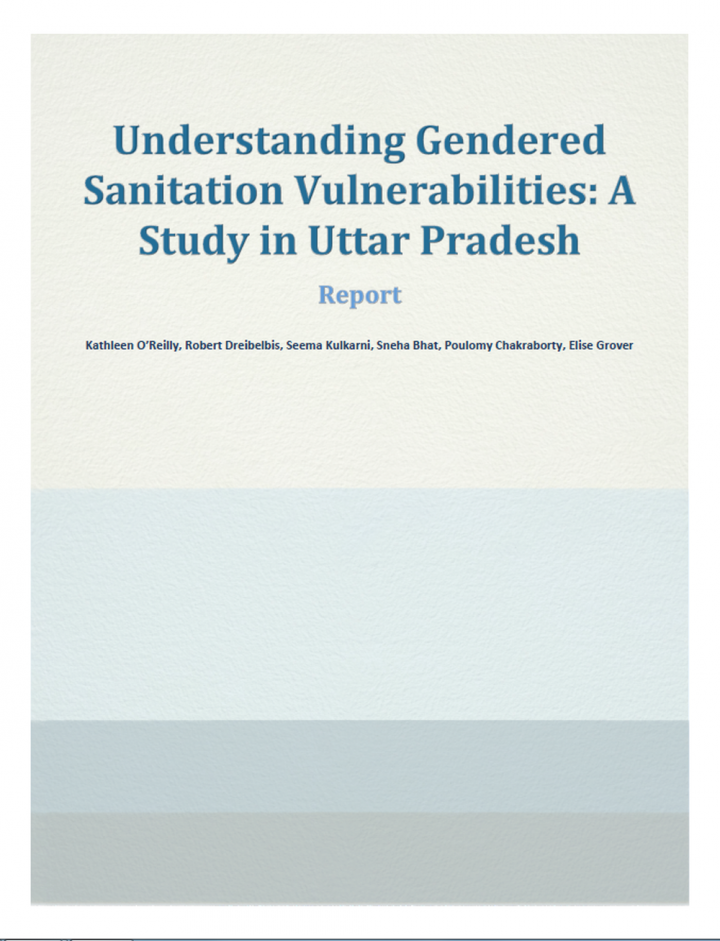Understanding Gendered Sanitation Vulnerabilities: A Study in Uttar Pradesh Report O’Reilly, K. et al. (2017)
This report is the outcome of a study which aimed at understanding rural women and girls' age-specific experiences of using and accessing sanitation. The study focussed on the accessibility of latrines and the conditions of sanitation experienced across age, religion, caste, etc. The study objectives were informed by research indicating that women and girls have unique needs, and that these needs vary between urban and rural environments (Sahoo et al. 2015; Simiyu 2015; O’Reilly 2015). Specifically, we were interested in assessing the gender, caste, and age-specific experiences of SRPS that rural women and girls experience, and to suggest ways that SDG indicators and guidelines for Swachh Bharat Mission—Rural (SBM) in India might be adjusted to be more sensitive to the unique needs and stresses of rural women and girls without access to sanitation.
Bibliographic information
O’Reilly, K. et al. (2017). Understanding Gendered Sanitation Vulnerabilities: A Study in Uttar Pradesh Report SHARE
Filter / Tags
EducatorsJournalistsPoliticians and local decision makersCase studies in other formatsEnglishWomen's rights & representation and empowermentIntersectionality
Downloads
Understanding Gendered Sanitation Vulnerabilities: A Study in Uttar Pradesh
Type: application/pdf
Size: 5.69 MB

